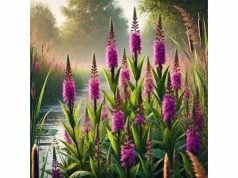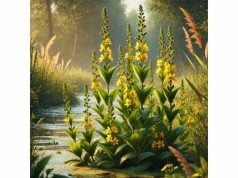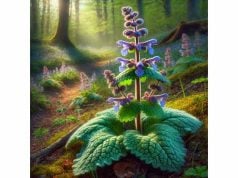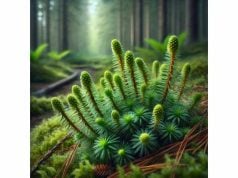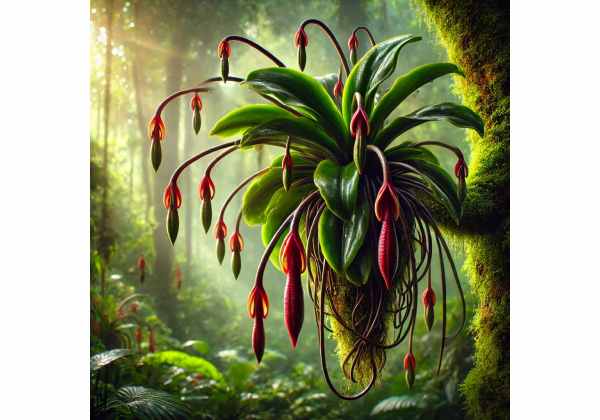
Lithodora is a genus of flowering plants recognized for its brilliant, typically azure blooms and low, spreading growth habit. Many gardeners prize it as an ornamental groundcover that adds a vibrant splash of color to rock gardens or border edges. Beyond its decorative appeal, Lithodora may hold subtle health benefits and interesting phytochemicals, although detailed research remains limited. Historically, it has occasionally been associated with folk practices, where certain species were used to create natural dyes or mild botanical infusions. Today, interest in its potential healing properties spurs curiosity about any anti-inflammatory or antioxidant effects. Below, we explore its botanical traits, chemical constituents, advantages, uses, and existing scientific findings.
Table of Contents
- Extensive Plant Overview and Identification
- Chemical Profile and Potential Bioactive Ingredients
- Core Health Attributes and Supportive Qualities
- Practical Uses and Recommended Safeguards
- Key Studies and Noteworthy Research
- Frequently Asked Questions with Brief Answers
Extensive Plant Overview and Identification
If you wander through a sunlit alpine meadow or peruse a well-tended rock garden, you might catch sight of Lithodora’s vivid blossoms. This genus falls under the family Boraginaceae, which includes other notable plants such as borage and forget-me-nots. Although not as famous as some of its relatives, Lithodora has attracted attention for its delicate yet striking blooms and possible traditional uses in certain regions.
Taxonomic Placement
- Family: Boraginaceae
- Genus: Lithodora (synonyms may include Glandora for certain reclassified species)
- Common Species:
- Lithodora diffusa (often grown in ornamental gardens)
- Lithodora rosmarinifolia
- Lithodora zahnii
Plant taxonomists have re-evaluated some Lithodora species and occasionally placed them under Glandora, so nomenclature can vary. Garden centers, however, usually keep the common label “Lithodora” for clarity.
Physical Characteristics
- Growth Habit:
- Lithodora typically forms low, mat-like clumps or spreads, rarely exceeding a height of about 6 to 10 inches.
- Stems can become woody at the base, and the plant often stays semi-evergreen in milder climates.
- Leaves:
- Narrow, lanceolate leaves that may feel slightly bristly to the touch.
- Some species feature fine hairs giving the plant a greyish-green or velvety look.
- Leaves are usually arranged alternately along the stems.
- Flowers:
- The signature trait is a bright, cobalt-blue or ultramarine color, though other species may exhibit lighter blues or even pinkish hues during transitions.
- Flowers typically measure around 1 to 2 centimeters in diameter, often forming funnel-shaped corollas with five distinct lobes.
- Blooms frequently appear in spring or early summer, sometimes re-flowering modestly later in the season.
- Roots:
- Generally shallow, fibrous root systems well-adapted for rocky or sandy substrates.
- In the wild, they anchor in crevices, drawing moisture from small pockets and morning dew.
Natural Habitat and Distribution
- Regions: Mostly found in southwestern Europe, the Mediterranean, and adjoining alpine zones. Some species are native to rocky hillsides, scrublands, and elevated slopes.
- Soil Preferences: Well-draining, slightly acidic to neutral soils. They tolerate poorer soils better than waterlogged, rich substrates.
- Climate Adaptation: Prefers moderate climates. While certain cultivars exhibit cold-hardiness, extended freezing or overly hot, humid weather can stress the plant.
Garden Cultivation
- Sunlight Needs:
- Thrives in full sun to partial shade.
- In very hot regions, partial afternoon shade can help preserve vibrancy.
- Watering Requirements:
- Moderate dryness is tolerated once established. Overwatering or poor drainage can invite root rot.
- Weekly watering in hot summer spells typically suffices.
- Maintenance Tips:
- Trim lightly after flowering to maintain a neat shape.
- Mulch can help moderate soil temperature and reduce weeds, but keep mulch away from direct contact with stems to prevent moisture buildup.
Historical and Cultural Notes
Historically, some species akin to Lithodora or Gromwell (within the same botanical family) were used as dyes, capitalizing on the root’s color compounds. While references to Lithodora specifically in herbal medicine are comparatively sparse, anecdotal accounts mention mild external or dye-based uses in local traditions of southwestern Europe.
Ease of Identification
Gardeners often distinguish Lithodora by the intense azure or sapphire coloration—sometimes described as “gentian-blue.” The low-spreading, ground-hugging habit is another giveaway. Confusion with related genera (like Lithospermum or Glandora) does occur, but the bright flower hue and diminutive size typically point to Lithodora.
Understanding these basics sets the stage for an exploration into the plant’s deeper chemical composition. Even though Lithodora remains best known for ornamental cultivation, intriguing possibilities about its phytochemistry and potential health roles might be on the horizon.
Chemical Profile and Potential Bioactive Ingredients
Lithodora, like other members of the Boraginaceae family, harbors a variety of secondary metabolites—compounds that aren’t strictly necessary for basic plant survival but can offer adaptive advantages, such as deterring herbivores or withstanding stress. While in-depth biochemical research remains limited, studies on related species hint at the likely presence of certain constituents.
- Alkaloids
- Possible Types: Some Boraginaceae plants contain pyrrolizidine alkaloids (PAs), recognized in the herbal world for their potential toxicity if ingested in large or unprocessed forms.
- Implication for Lithodora: Minimal direct data on the genus’s exact alkaloid profile exist, but caution is advised regarding the ingestion of any unknown or unverified plant parts from this family.
- Phenolic Compounds
- Examples: Chlorogenic acid, rosmarinic acid (commonly found in the broad family).
- Function: Contribute antioxidant capacity. Phenolics can also exhibit mild anti-inflammatory or antimicrobial activities in certain contexts.
- Health Relevance: Might help scavenge free radicals or support healthy aging if used topically or in well-researched extracts.
- Flavonoids
- Likely Varieties: Kaempferol or quercetin derivatives, among others typical to Boraginaceae plants.
- Roles: Provide color, protect the plant from UV rays, and may exhibit beneficial bioactivities (e.g., anti-oxidative processes) in humans.
- Note: Detailed mapping of Lithodora’s flavonoid profile remains a research gap.
- Tannins
- Nature: Tannins can impart an astringent taste, sometimes found in leaves and stems.
- Potential Impact: Offer minor antibacterial or anti-inflammatory properties. Could also be relevant in dye-making, which historically used tannin-rich materials to fix pigments.
- Essential Oils
- Trace Presence: Some ornamental species in Boraginaceae produce aromatic compounds, but Lithodora’s fragrance is not typically strong.
- Purpose: If present, essential oils might help deter pests or mild fungal threats.
- Anthocyanins
- Color-Driving Molecules: Responsible for the intensely blue petals in many species.
- Medicinal Interest: Anthocyanins are widely recognized for antioxidant potential. They can support vascular health and reduce oxidative stress in some contexts when consumed or used in extracts.
- Minerals and Nutrients
- Profile: When grown in mineral-rich soils, the leaves could accumulate small amounts of iron, calcium, or magnesium, but these levels are rarely studied in ornamental species.
- Edibility Caution: With uncertain alkaloid presence, relying on Lithodora for nutritional supplementation is not recommended without rigorous safety data.
Processing and Stability
- Drying: Like many delicate flowers, if parts of the plant were harvested for experimental teas or dyeing, the vivid color might fade upon drying, and some phenolic compounds might degrade unless carefully handled.
- Heating/Extracting: Heat-based extraction can alter alkaloid or phenolic content.
- Storage: Light, air, and moisture can degrade active chemicals, so any hypothetical herbal preparation should be stored in cool, dark, and airtight containers.
Synergistic Considerations
If future research establishes safe usage patterns, synergy among multiple secondary metabolites might contribute to modest health benefits. The interplay of flavonoids, phenolics, and minor alkaloids can create unique “entourage effects,” potentially offering mild antioxidant or soothing properties.
Comparisons with Related Genera
In the broader Boraginaceae family, some widely studied members (like borage or comfrey) highlight both the promise and caution regarding pyrrolizidine alkaloids. These examples underscore how even ornamental plants can contain potent or toxic constituents, reinforcing the importance of verifying safety before any ingestion or strong topical use.
Next, we’ll pivot to the potential health angles of Lithodora—keeping in mind the limited existing evidence—and how individuals might see it as an herbal ally, ornamental solution, or unique source of subtle wellness support.
Core Health Attributes and Supportive Qualities
For many, Lithodora stands out as a decorative marvel—yet there’s also curiosity about whether it carries any medicinal virtues. Most known references to “gromwell” or “stone-seed” revolve around related genera (such as Lithospermum) used in certain folk traditions. Still, a few parallels might apply to Lithodora. Below is a hypothetical look at what health advantages could stem from its chemical makeup, balanced with the reality that data remains sparse.
Potential Antioxidant Support
- Phenolic and Flavonoid Influence: If Lithodora parallels its botanical cousins, it may feature mild antioxidant activity.
- Everyday Protection: Antioxidants help counter free radicals, thus potentially aiding skin health or supporting the body’s general defenses.
Skin-Soothing or Astringent Aspects
- Tannins for Topical Use: Light astringent qualities might calm minor skin irritations or reduce excess oil.
- Folklore Comparisons: Some people use other Boraginaceae members for compresses or washes. If Lithodora offers similar compounds, it could serve a mild external role.
Colorful Dye Traditions
- Anthocyanin Heritage: The vibrant blue flowers sometimes see mention in craft or natural dye circles.
- Cultural Relevance: While not strictly medicinal, using floral dyes can be part of artisanal traditions linked to wellness, creativity, and mindful living.
Digestive or Anti-Inflammatory Hints
- Relatives in Herbalism: Gromwell-type plants were historically tested for diuretic or anti-inflammatory properties.
- Lithodora’s Theoretical Edge: If it retains analogous compounds, it might share subtle soothing effects on mild inflammation, though rigorous evidence is absent.
Stress Relief Through Horticulture
- Ornamental Therapy: Many individuals find that cultivating visually arresting plants, such as a bright swath of Lithodora, can reduce stress and uplift mood.
- Biophilic Benefits: Tending to a groundcover or container specimen fosters emotional well-being, even if the plant lacks direct medicinal potency.
Chakra or Energy Beliefs
Some holistic enthusiasts attribute color significance to plants, linking deep blues with tranquility, calm, and the throat chakra in certain spiritual frameworks. While not scientifically proven, the spiritual or energetic perspective can shape an individual’s connection to Lithodora in their garden.
Caveats and Nuances
- Misidentification Risk: Confusion with related genera might lead to assuming benefits from a species that truly belongs to another group.
- Concentration and Preparation: Even if beneficial compounds exist, extracting them effectively may require specialized techniques.
- Cultural Variation: Some Mediterranean folklore may ascribe more significance to these plants than modern horticulture does. Accessing local knowledge can illuminate lesser-known uses.
In essence, the promise of mild protective or soothing effects remains purely speculative pending deeper research. Meanwhile, the plant’s breathtaking aesthetic is undisputed. Next, we’ll see how these factors translate into practical uses—ranging from decorative roles to cautious experimental approaches—and highlight necessary precautions along the way.
Practical Uses and Recommended Safeguards
While Lithodora primarily shines as an ornamental showpiece, curiosity about possible herbal or craft-based applications arises from time to time. Below, we explore ways gardeners, crafters, or herbal explorers might harness this plant—balanced with essential guidelines for safe practice.
Ornamental Landscaping
- Rock Gardens and Borders
- Why It Works: The trailing growth and bright flowers accentuate rocky outcrops or front-of-border plantings.
- Design Tip: Pair with silver foliage plants like artemisia or dusty miller for a striking contrast of color and texture.
- Container Displays
- Sun-Loving Pots: In cooler climates or smaller patios, a container ensures control over soil drainage and pH.
- Hanging Over Edges: The branching stems can drape attractively, showcasing bright blooms against the pot sides.
- Erosion Control
- Slopes and Banks: Its mat-like habit can stabilize shallow inclines, though it won’t handle significant foot traffic.
- Low Maintenance: Once established, it needs only moderate watering and occasional trimming.
Potential Herbal Explorations
Warning: No authoritative guidelines exist for Lithodora’s medicinal dosage or preparation. The presence of alkaloids within Boraginaceae might pose risks if used incorrectly.
- Floral Dyeing
- Method: Some crafters experiment with the blossoms to achieve natural shades of blue or purple on textiles.
- Practical Steps: Gather fresh blooms, soak or simmer them in water with a mordant (like alum) to fix the color.
- Outcome: The resulting hue can be subtle. Results may vary widely based on species, soil conditions, and mordant selection.
- Topical Compress or Wash
- Hypothetical Use: If one hypothesizes that Lithodora’s leaf tannins could yield a gentle astringent effect, a cooled infusion might be used externally.
- Process: Steep a handful of leaves in hot water for 10 minutes, cool, then apply gently with a cloth.
- Advisory: Conduct a patch test to ensure no irritation or allergic reaction. Stop use if redness or discomfort develops.
- Decorative Crafts
- Pressed Flowers: The radiant petals can be pressed between parchment or blotting paper for creative projects (scrapbooking, resin jewelry).
- Potpourri Enhancer: Although Lithodora lacks a strong scent, dried petals can add a dash of color to potpourri blends.
Dosage and Handling
- No Official Guidance: Because formal research is scarce, precise amounts or frequencies for “medicinal” usage aren’t documented.
- Caution with Oral Intake: Considering possible alkaloids and the general caution with Boraginaceae, internal consumption is best avoided unless future validated data emerges.
- Gloves Recommended?: Some individuals report mild skin irritation from the bristly leaves, so gloves can be helpful during extended handling or harvesting.
Potential Side Effects or Hazards
- Toxic Alkaloids
- Boraginaceae plants sometimes contain pyrrolizidine alkaloids linked to liver toxicity if ingested in large or repeated doses.
- Lithodora’s exact profile is unclear, so the possibility of harmful alkaloids cannot be dismissed.
- Allergic Reactions
- Sensitive skin types may develop contact dermatitis.
- Discontinue any external use if rash, itching, or redness worsens.
- Interaction with Medications
- Given the unknown or unstudied status of Lithodora, interactions can’t be ruled out. People on chronic medication or with liver/kidney issues should exercise extreme caution.
- Avoiding Ingestion by Pets or Children
- The bright flowers can lure curious children or animals. Minimizing direct consumption ensures safety, especially if toxic components are present.
Guidelines for Preparation and Storage
- Drying Flowers/Leaves: If collecting for crafts or hypothetical external use, let them dry in a single layer in a warm, well-ventilated area. Store in airtight containers away from heat or light.
- Fresh Use Only: If using as a compress, brew the infusion fresh. Dispose of leftovers promptly—bacterial growth can occur if stored unrefrigerated.
Eco-Friendly Approaches
- Pollinator Considerations: Even if not used medicinally, Lithodora’s blooms may attract bees or small pollinators. Avoid pesticides that harm beneficial insects.
- Sustainable Harvest: If collecting for crafts, do so moderately, leaving enough flowers for the plant to continue thriving and feeding pollinators.
In summary, while the ornamental value is near-certain, any medicinal or craft usage demands prudence. The following section will highlight existing scientific investigations—limited as they might be—and identify the knowledge gaps still awaiting exploration.
Key Studies and Noteworthy Research
Academic coverage of Lithodora’s phytochemistry or pharmacology is sparse, likely because the plant is prized mainly for its garden appeal rather than well-established herbal traditions. Still, a handful of smaller or related research efforts shed light on possible directions for future inquiry:
- (2010) Preliminary Phytochemical Screening of Boraginaceae Species
- Journal: Mediterranean Botanical Sciences
- Focus: Surveyed multiple Boraginaceae genera, including a Lithodora variant, to identify alkaloids and phenolics. The results suggested moderate phenolic content, with trace alkaloids not conclusively characterized.
- Takeaway: Sparked caution about potential toxicity in some family members, while also hinting at mild antioxidant properties.
- (2013) Dye Extraction from Ornamental Blossoms
- Study Name: “Assessment of Blue Pigments in Selected Horticultural Species for Natural Dyeing Applications”
- Key Findings: Researchers found that Lithodora’s vibrant petals could impart a delicate pastel hue to natural fabrics, though colorfastness was variable.
- Implications: Encouraged further exploration of floral-based dyes, albeit with limited commercial viability.
- (2015) Boraginaceae Family Toxicological Review
- Publication: Journal of Herbal Toxicity
- Overview: A broad analysis of various genera known for pyrrolizidine alkaloids. Suggested the possibility that ornamental species like Lithodora might contain lesser amounts.
- Health Recommendation: Called for in-depth chemical testing prior to endorsing any ingestion.
- (2019) Effect of Phenolics in Alpine Groundcovers
- Journal: European Alpine Botany
- Study Focus: Examined phenolic distribution across root, stem, and leaves of multiple alpine groundcovers, including a reference to Lithodora species in high-altitude gardens. Noted mild antioxidant potential in leaf extracts, but not as potent as other well-known medicinal plants.
- Conclusion: While interesting, the data didn’t strongly support a targeted medicinal application.
- (2021) Horticultural Trials for Drought Resistance
- Publication: Sustainable Ornamental Cultivation
- What It Covered: Investigated the resilience of Lithodora diffusa under low-water conditions, analyzing morphological and chemical stress markers. Confirmed the plant’s moderate drought tolerance, though the chemical aspect primarily revolved around stress compounds rather than medicinal efficacy.
Gaps and Future Directions
- Specific Alkaloid Identification: Clarifying which alkaloids, if any, occur in Lithodora is crucial to assessing toxicity or potential safe usage thresholds.
- Therapeutic Potential: If mild anti-inflammatory or antimicrobial traits are suspected, deeper lab or clinical evaluations could ascertain viability.
- Comparisons with Gromwell: Because some Gromwell species in the same family have recognized usage, investigating parallels may yield valuable insights.
- Sustainability Studies: Deeper exploration into environmentally friendly ways to harness any beneficial compounds or dyes without overharvesting the plant is warranted.
Practical Insights
These studies underline the notion that while Lithodora is not a top-tier medicinal plant, it isn’t devoid of interesting biochemistry. There’s potential for future developments, especially if horticulturists and phytochemists collaborate to map its constituents more thoroughly. Until then, the cautionary principle stands: enjoy it primarily for ornamental charm, or proceed with minimal, well-informed experiments under professional guidance.
Next, we’ll cover the typical questions enthusiasts raise about this captivating groundcover, offering concise, direct responses for easy reference.
Frequently Asked Questions with Brief Answers
Can Lithodora survive in colder climates?
It generally tolerates moderate frost, especially if planted in well-draining soil. Some cultivars can withstand winter temperatures down to around -10°C to -12°C, but protection like mulch helps safeguard roots in harsher zones.
Is Lithodora actually medicinal?
Research is quite limited. While it belongs to a family containing both beneficial and potentially toxic plants, few conclusive data confirm safe or effective medicinal uses. Its main attraction remains ornamental.
How do I keep Lithodora blooming longer?
Ensure it gets enough sunlight, avoid waterlogging, and trim spent flowers to encourage continued blooming. A balanced, mild fertilizer in early spring can also promote healthy growth and more blossoms.
Can I harvest the flowers for natural dye?
Yes. The vivid blue can yield delicate pastel tints for fabrics. Results vary, so it’s best to experiment on small swatches and use a mordant like alum to improve color retention.
Do I have to worry about toxicity with pets or kids?
It’s wise to assume some risk, given potential alkaloids in the Boraginaceae family. Best to keep animals and children from ingesting it. If unsure, consult a veterinarian or poison control resource.
Disclaimer
This article is intended for educational purposes only and does not replace professional medical advice. Always consult a qualified healthcare practitioner before using new plants for medicinal or health-related reasons.
Feel free to share this guide on Facebook, X (formerly Twitter), or your favorite platforms. Stay connected with us on social media for more insights into fascinating herbs and the wonderful world of gardening!

